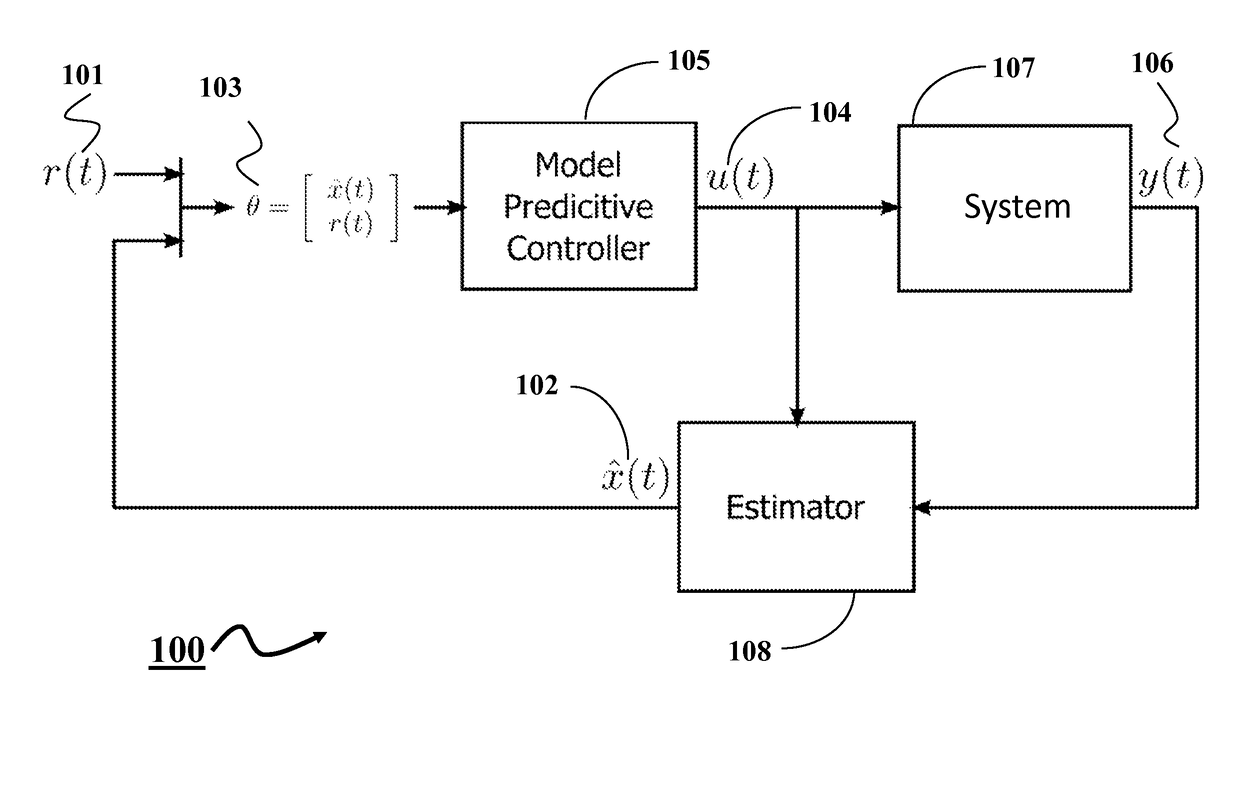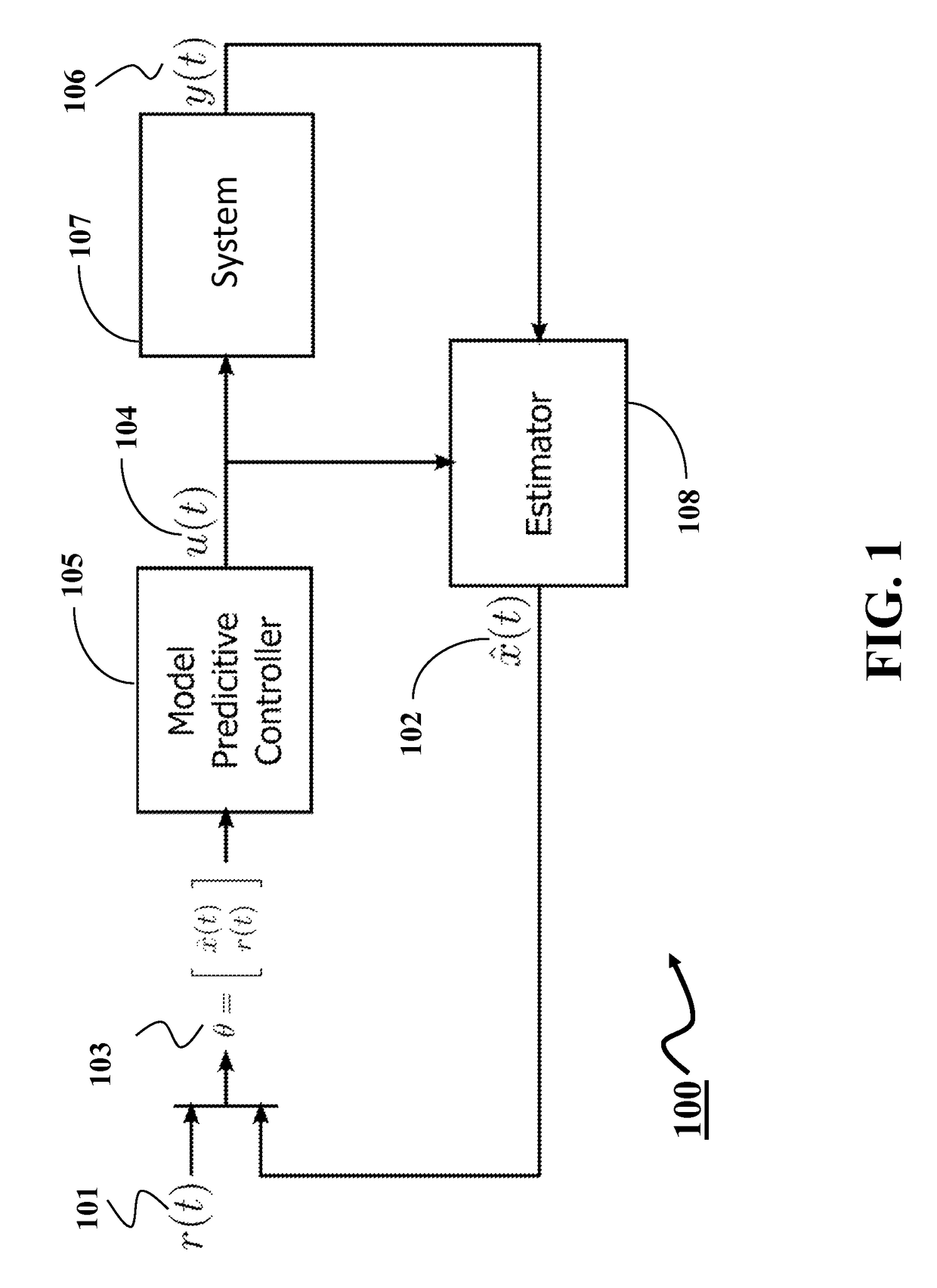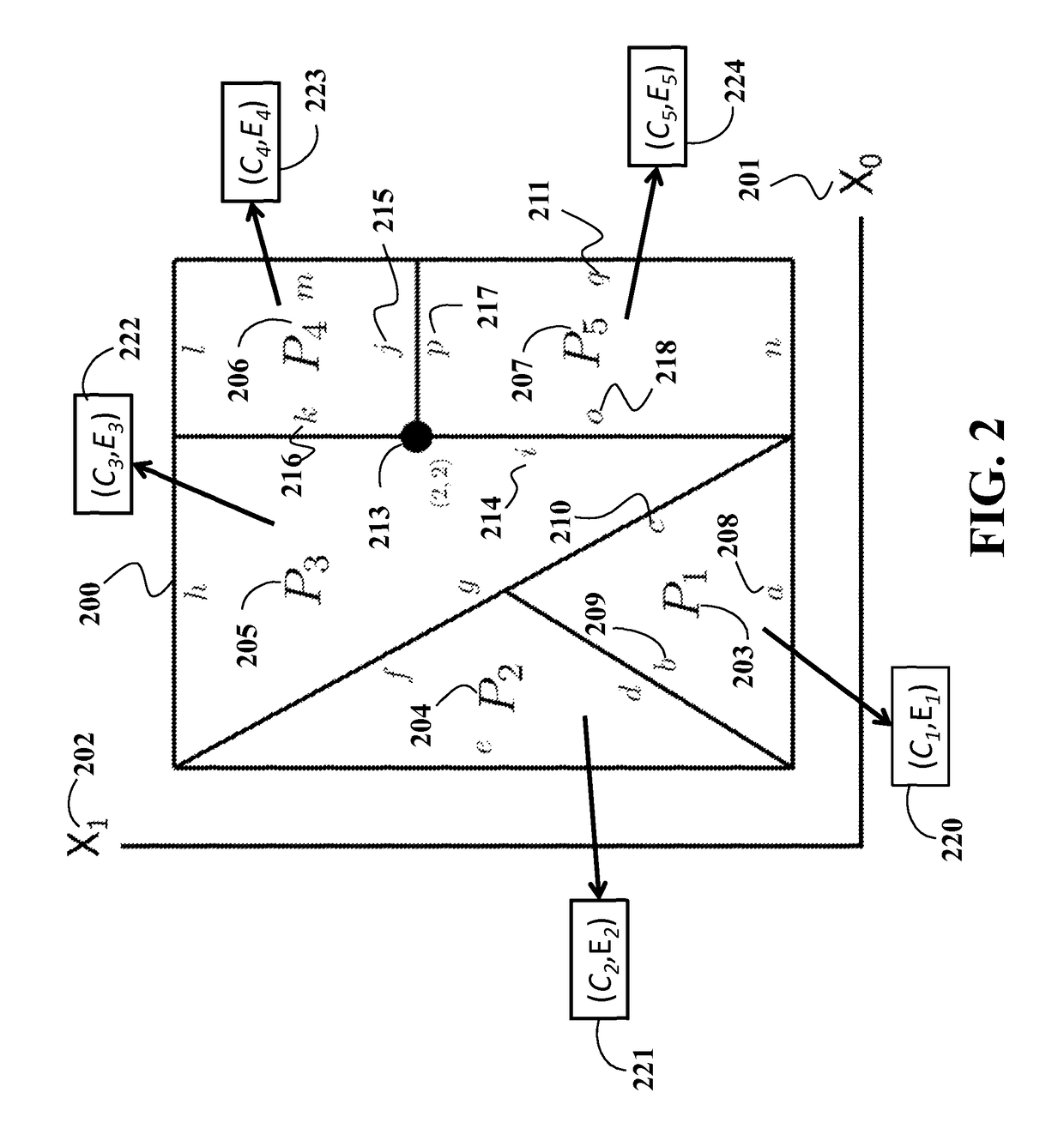System and method for explicit model predictive control
a model and model technology, applied in adaptive control, process and machine control, instruments, etc., can solve problems such as challenging tasks, system operation, and mpc solving nonlinear programs in real-time, and achieve the effect of reducing processing time and high degree of atomicity
- Summary
- Abstract
- Description
- Claims
- Application Information
AI Technical Summary
Benefits of technology
Problems solved by technology
Method used
Image
Examples
Embodiment Construction
[0029]FIG. 1 shows a block diagram of a control system 100 using an explicit model predictive control (EMPC) according to some embodiments of the invention. The control system 100 includes a model predictive controller 105 and a state estimator 108 to control a system 107. During the operation, the controller receives a reference signal r(t) 101 indicating the reference operation of the system as a function of time t. The reference signal can be, for example, a motion or a position command, or represent the desired value of some parameter in the system. In response to receiving the reference signal r(t) 101, the controller generates a control signal u(t) 104 for the system. In response to the input, the system updates the output y(t) 106 and the state x(t) 102 of the system.
[0030]The system can be any device that is controlled by manipulating control signals (inputs), possibly associated with physical quantities such as voltages, pressures, forces, and returns system output possibly...
PUM
 Login to View More
Login to View More Abstract
Description
Claims
Application Information
 Login to View More
Login to View More - R&D
- Intellectual Property
- Life Sciences
- Materials
- Tech Scout
- Unparalleled Data Quality
- Higher Quality Content
- 60% Fewer Hallucinations
Browse by: Latest US Patents, China's latest patents, Technical Efficacy Thesaurus, Application Domain, Technology Topic, Popular Technical Reports.
© 2025 PatSnap. All rights reserved.Legal|Privacy policy|Modern Slavery Act Transparency Statement|Sitemap|About US| Contact US: help@patsnap.com



